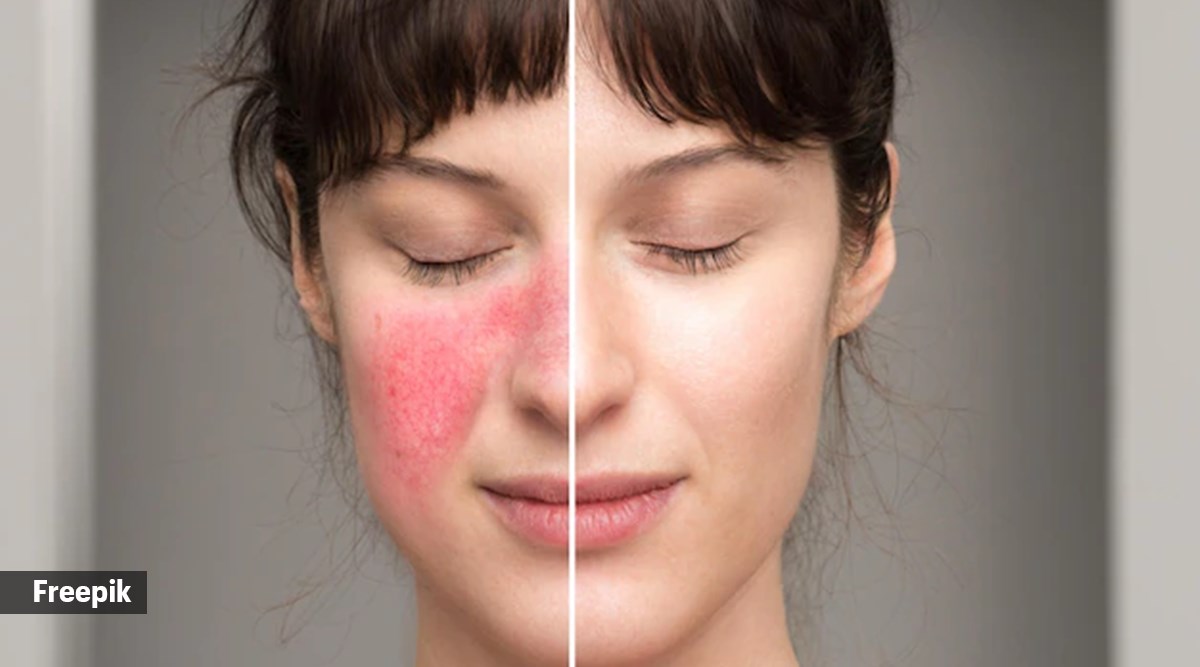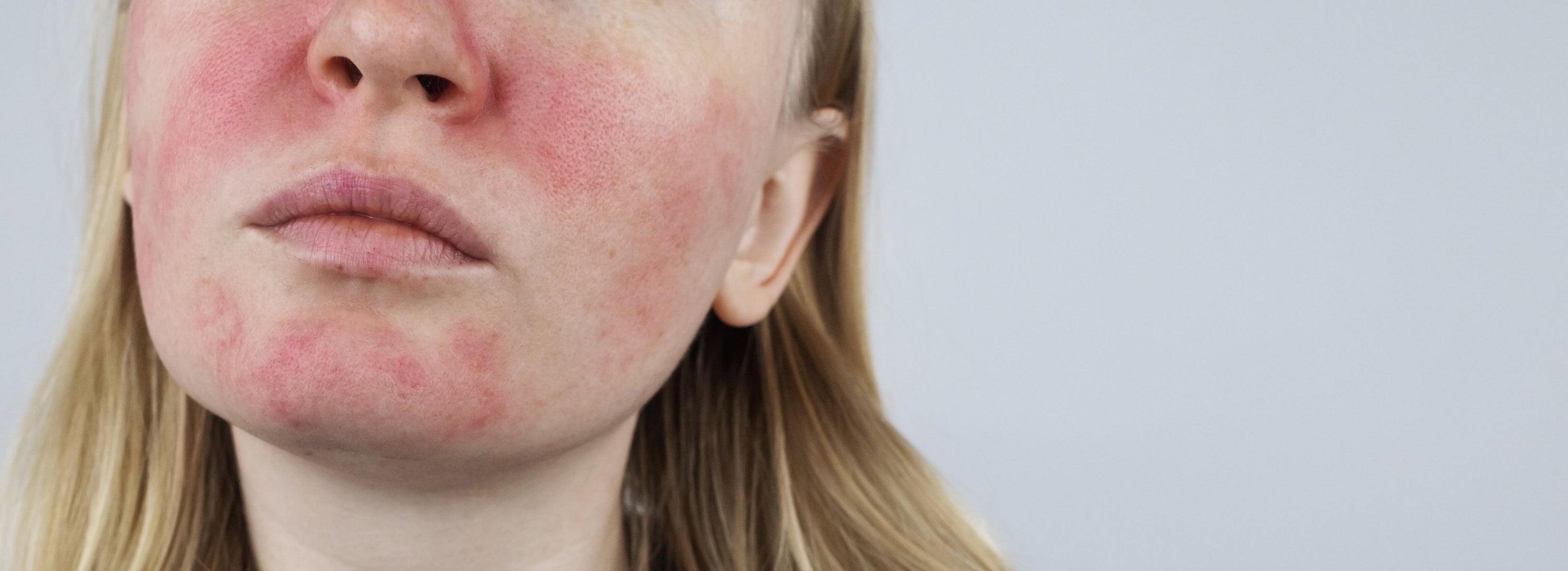Get Your AI Analysis
Personalized skincare insights
Discover your perfect skincare routine with our AI-powered analysis. Get personalized recommendations for glowing, healthy skin.
Start AnalysisFollow Us
Stay updated with the latest skincare tips, trends, and expert advice.
Calm Your Redness: Chamomile and Oat for Soothed Skin
As a skincare veteran with over a decade immersed in the ever-evolving world of dermatology and beauty, I’ve seen countless trends come and go. Yet, some ingredients stand the test of time, consistently proving their worth. Today, we're diving deep into two skincare superheroes: chamomile and colloidal oatmeal.

If you struggle with persistent redness, irritation, or an easily reactive complexion, prepare to unlock secrets to a calmer, more comfortable skin barrier. Understanding how these gentle botanicals work is key to transforming your sensitive skin routine. Let's explore the science, the products, and the application methods that will help you achieve that coveted, tranquil glow.

Decoding Skin Redness and Inflammation
Redness and inflammation are often the most visible signs of an unhappy skin barrier, manifesting as a persistent flush, angry blemishes, or a general feeling of heat and sensitivity. These issues stem from various factors including environmental aggressors, harsh products, allergies, or conditions like rosacea and eczema. When skin perceives a threat, its immune response triggers vasodilation and inflammatory mediators, causing redness and discomfort. Chronic inflammation weakens the skin's protective barrier, increasing vulnerability and accelerating aging. Interrupting this cycle with calming ingredients is crucial for long-term skin health, providing the gentle yet powerful support needed to heal and thrive.
Why Calm Ingredients Are Crucial
Reduce Discomfort: Alleviates itching, stinging, and burning sensations.
Support Barrier Repair: Helps rebuild the skin's natural protective layer.
Prevent Future Flare-ups: Strengthens skin resilience against irritants.
Improve Appearance: Visibly diminishes redness and uneven tone.
Chamomile: The Ancient Healer for Modern Skin
For centuries, chamomile, particularly German chamomile (Matricaria recutita), has been revered for its medicinal properties, often brewed as a calming tea. In skincare, its benefits are equally profound. The magic lies in its potent blend of active compounds, primarily bisabolol and chamazulene. Bisabolol, from the Candeia tree, is known for its anti-inflammatory, anti-irritant, and mild antimicrobial properties. Chamazulene, responsible for chamomile's distinctive blue color in essential oil form, is another potent anti-inflammatory agent and antioxidant. Research continually backs chamomile's efficacy; a study in the Journal of Clinical and Aesthetic Dermatology highlighted bisabolol's ability to soothe skin and accelerate healing, beneficial for post-procedural irritation or general sensitivity. Its antioxidant capacity neutralizes free radicals, major contributors to inflammation and cellular damage, making it a comprehensive ingredient for compromised skin. Topically, chamomile inhibits the release of pro-inflammatory mediators, calming reactions leading to redness and discomfort. It's a gentle powerhouse, ideal for reactive skin types, rosacea, or mild sun exposure recovery.
"Chamomile is an unsung hero in calming sensitive skin. Its unique cocktail of active compounds provides a multi-pronged approach to reducing inflammation, making it highly effective for daily redness management. I often recommend it for my patients with rosacea-prone skin."
— Dr. Evelyn Reed, Board-Certified Dermatologist
Colloidal Oatmeal: The Skin's Soothing Shield

If there's one ingredient embodying gentle efficacy, it's colloidal oatmeal. Not just breakfast oatmeal, colloidal oatmeal is finely milled, allowing full dispersion in liquid for maximum skin contact. Used since ancient times for soothing skin, its power endures. Key compounds are avenanthramides and beta-glucan. Avenanthramides are potent anti-inflammatory and anti-itch molecules, reducing redness and irritation. Unique to oats, studies show they inhibit inflammatory cytokines, quieting the skin's stress response. Beta-glucan, a soluble fiber, acts as a humectant, drawing moisture, and forms a protective barrier, strengthening skin defenses.

The U.S. Food and Drug Administration (FDA) officially recognized colloidal oatmeal as a safe and effective over-the-counter (OTC) skin protectant in 2003, cementing its status as a clinically proven ingredient for eczema, psoriasis, and dry, irritated skin. Its ability to create a protective film locks in moisture and acts as a physical barrier against environmental irritants, aiding healing.
"Colloidal oatmeal isn't just an old wives' tale; it's a scientifically validated ingredient. Its avenanthramides are exceptional at calming itch and inflammation, while its barrier-supporting properties are indispensable for anyone dealing with a compromised skin barrier. It's a cornerstone for sensitive skin management."
— Dr. Marcus Thorne, Cosmetic Dermatologist
The Calming Duo: Chamomile & Oat in Harmony
While each ingredient is formidable alone, chamomile and colloidal oatmeal offer incredible synergy when combined. Chamomile brings potent anti-inflammatory and antioxidant properties to directly soothe cellular irritation. Colloidal oatmeal provides a protective, hydrating, and barrier-repairing effect alongside its own anti-inflammatory actions. This comprehensive approach means chamomile addresses root inflammatory responses, while colloidal oatmeal rebuilds and fortifies the skin's surface, preventing flare-ups and locking in comfort. This dual action is particularly beneficial for severely compromised or chronically reactive skin, offering immediate relief and long-term resilience.
Integrating Calming Treatments into Your Routine
Building a sensitive skin routine centered around these ingredients doesn't have to be complicated. The key is consistency and gentle application. Here’s how to effectively weave chamomile and oat into your daily regimen:
Step-by-Step Application Guide:
Gentle Cleansing: Start with a low-pH, fragrance-free cleanser with oat or chamomile. Avoid harsh scrubbing; use lukewarm water.
Recommendation: Aveeno Calm + Restore Oat Cleanser or First Aid Beauty Pure Skin Face Cleanser.Soothing Treatment/Serum: After cleansing, apply a serum or essence rich in chamomile, bisabolol, or avenanthramides for deeper absorption.
Recommendation: Kiehl's Calendula Herbal-Extract Alcohol-Free Toner or Avene Thermal Spring Water mist followed by a calming serum.Hydrating Moisturizer: Seal with a rich moisturizer featuring colloidal oatmeal to lock in moisture and support barrier function.
Recommendation: La Roche-Posay Toleriane Double Repair Face Moisturizer or Eucerin Eczema Relief Cream.Targeted Masks (1-2x weekly): For an intensive boost, use a calming mask with high concentrations of these ingredients.
Recommendation: REN Evercalm Ultra Comforting Rescue Mask or a DIY colloidal oatmeal mask.Daily Sun Protection: Non-negotiable for sensitive skin. Choose a mineral sunscreen (zinc oxide, titanium dioxide) SPF 30+ to prevent UV irritation.
Recommendation: EltaMD UV Physical Broad-Spectrum SPF 41.
Pro Tips for Maximum Calm:
Patch Test: Always introduce new products one at a time and patch test on a small area of skin (e.g., behind the ear or on the inner arm) for a few days to check for reactions.
Less is More: Avoid over-exfoliating or using too many active ingredients at once, especially when skin is reactive. Simplify your routine.
Gentle Touch: Apply products with clean fingertips using light, pressing motions rather than rubbing.
Cool Application: Store toners or serums in the fridge for an extra cooling and soothing sensation upon application.

Beyond Topical: Lifestyle for Less Redness
While topical applications are crucial, holistic care is key for managing chronic redness and inflammation. Your lifestyle choices significantly impact skin health, supporting your complexion from every angle.
Dietary Considerations: Minimize inflammatory foods like highly processed items, excessive sugar, and refined carbohydrates. For some, dairy or gluten may be triggers. Incorporate anti-inflammatory foods rich in omega-3s (fatty fish, flax seeds), antioxidants (berries, leafy greens), and probiotics (fermented foods) to bolster gut and skin health.
Stress Management: Elevated cortisol, the stress hormone, can trigger inflammatory responses. Integrating stress-reducing practices—mindfulness, deep breathing, yoga, or hobbies—can improve your skin's demeanor and overall health.
Temperature Control: Extreme temperatures are common triggers. Avoid excessively hot showers, saunas, and sudden hot-to-cold transitions, as these exacerbate redness. Opt for lukewarm water during cleansing.
Hydration: Adequate internal hydration is fundamental for healthy skin barrier function. Drinking plenty of water daily maintains skin plumpness, elasticity, and supports toxin removal, reducing irritation. Aim for at least eight glasses.
Gentle Fabric Choices: For body redness or highly reactive facial skin, fabric choices matter. Opt for soft, breathable, natural fabrics like 100% cotton, silk, or bamboo for pillowcases and clothing to reduce friction and allow skin to breathe, minimizing irritation.
Remember, consistent, gentle care is the cornerstone of a truly calm complexion. By understanding the unique, research-backed benefits of chamomile and colloidal oatmeal, and thoughtfully integrating them into your daily routine alongside a supportive, holistic lifestyle, you’re not merely treating surface-level symptoms. Instead, you're actively building profound skin resilience from within and without. Embrace this journey towards soothed, happy skin, and confidently watch as persistent redness and inflammation gradually become a distant, fading memory. Your skin truly deserves this tender loving care and the consistent dedication you offer it.

